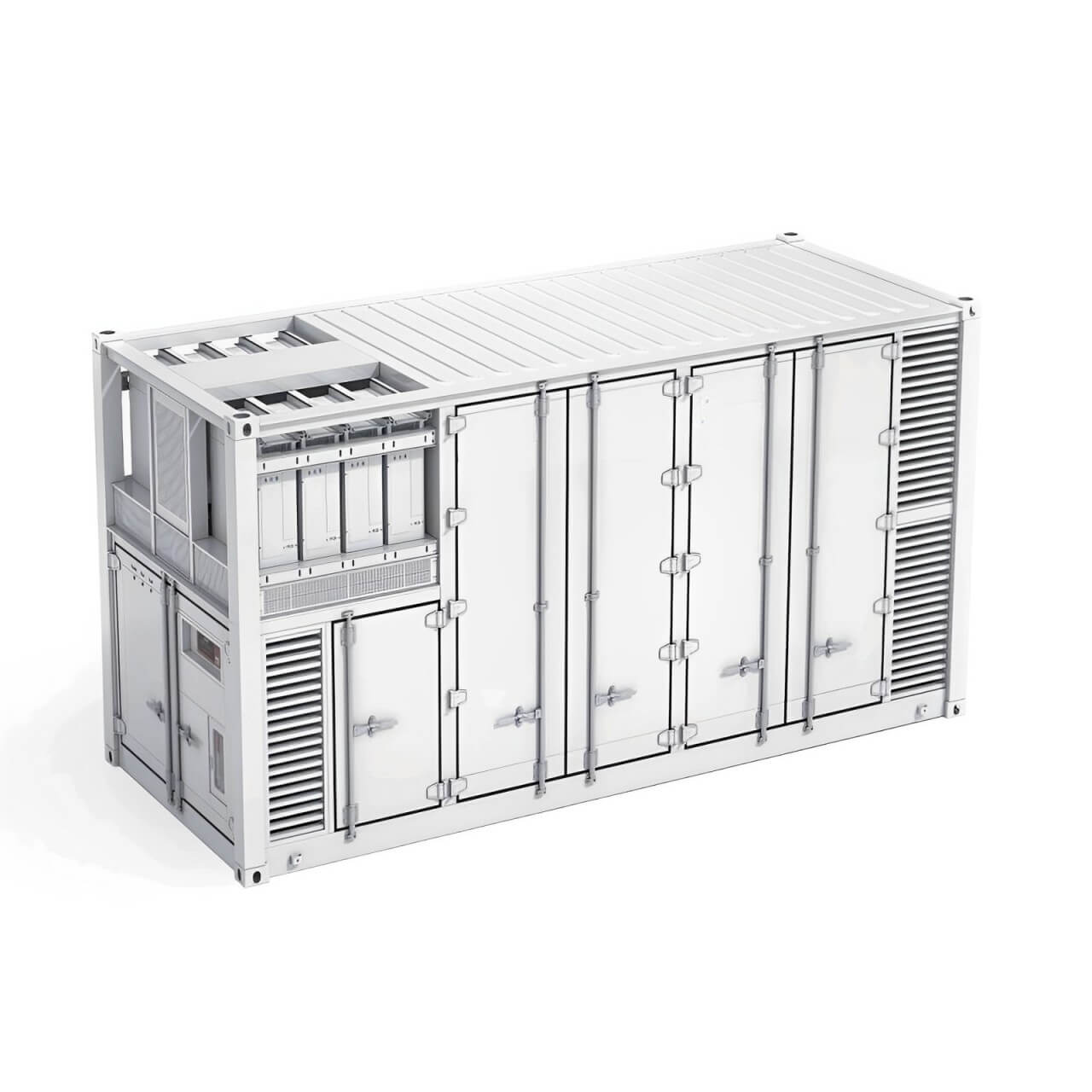Commercial energy storage system structure, business model and industry status
Commercial energy storage is a typical distributed energy storage application at the user end. Its characteristics are close to distributed photovoltaic power supply terminals and load centers, which can effectively improve the consumption rate of clean energy and effectively reduce transmission losses, which is conducive to achieving the "dual carbon" goal.
CSIT china commercial energy storage system will introduce commercial energy storage from the aspects of system structure, power plant architecture, business model and current industry.
Commercial energy storage system structure
Commercial energy storage system is different from large-scale energy storage, peak-shaving and frequency-regulating power stations. Its main purpose is to use the peak-valley price difference of the power grid to achieve investment returns.
The main load is to meet the internal electricity demand of industry and commerce, maximize the self-use of photovoltaic power generation, or arbitrage through peak-valley price difference.
Commercial energy storage system and energy storage power station system adopt modular design, and the system voltage and capacity configuration are flexible. The system includes:
● Battery system + BMS
● EMS
● Transformer
● Bracket
● Connecting cable
● Combiner cabinet
● Lightning protection and grounding system
● Monitoring and alarm system
Commercial energy storage is built in an integrated way with integrated cabinets. Industrial and commercial energy storage has lower requirements for system control than energy storage power plants, and some PCS products also have BMS functions.
In terms of EMS, industrial and commercial energy storage only needs to set the charging and discharging time to complete energy management, and the functional requirements are also lower than energy storage power stations.
However, with the increase of large industrial users, the capacity of industrial and commercial energy storage can reach more than megawatts, and the system configuration is basically the same as that of energy storage power stations.
Structure of commercial energy storage power plants
The configuration of commercial energy storage systems using PCS for AC-coupled energy storage is basically the same as that of energy storage power stations, but its relative capacity is small and the system functions are relatively simple.
The commercial energy storage system using PCS for AC-coupled energy storage is basically the same as the energy storage power station, but the relative capacity is small and the system function is relatively simple.
PCS inverters are usually bidirectional converters. 50-100kW optical storage integrated machines are also used in energy storage systems for small and medium-sized enterprises. The EMS of commercial energy storage systems is also different from the EMS of large energy storage power stations.
Commercial energy storage systems usually do not consider the needs of grid dispatching, but mainly provide local electricity, and only need to perform energy management and automatic switching within the local area network.
Commercial energy storage business model
The profit model of commercial energy storage is peak-valley arbitrage, that is, charging at a low electricity price when electricity consumption is low, and discharging to industrial and commercial users when electricity consumption is peak. Users can save electricity costs and avoid the risk of power restrictions.
With the increase of time-of-use electricity prices, the gap between peak and valley electricity prices has widened, and the economic efficiency of commercial energy storage has been significantly improved. At present, there are two main business models for the operation of commercial energy storage in China.
First, industrial and commercial users can directly reduce electricity costs by installing energy storage equipment on their own, but users need to bear the initial investment cost and annual equipment maintenance costs.
The other is that energy service companies assist users in installing energy storage devices. Energy service companies invest in the construction of energy storage assets and are responsible for operation and maintenance. Industrial and commercial users pay electricity bills to energy service companies.
At the same time, user-side energy storage has achieved multi-scenario expansion, and many energy storage applications have emerged, such as charging and swapping stations, data centers, 5G base stations, port shore power, and heavy truck replacement.
Current situation of commercial energy storage industry
Photovoltaic supporting commercial energy storage
The commercial energy storage market includes photovoltaic and non-photovoltaic commercial use scenarios. For commercial and large industrial users, a photovoltaic + energy storage supporting model can also be adopted to achieve self-generation and self-use of electricity.
Since the peak time of electricity consumption is relatively consistent with the peak time of photovoltaic power generation, the proportion of self-generation and self-use of industrial and commercial distributed photovoltaics is relatively high, and the capacity of the energy storage system and the photovoltaic power are mostly configured at 1:1.
According to statistics, in 2023, the average cost of a 4-hour energy storage system will drop to US$332/kWh, while the average cost of a 1-hour energy storage will be US$364/kWh.
The reduction in the cost of energy storage batteries, the optimization of system design, and the improvement of the standardization of system charging and discharging time will continue to lower the price of energy storage systems and increase the penetration rate of commercial optical storage facilities.
Non-PV supporting commercial energy storage
For commercial buildings, hospitals, schools and other scenes that are not suitable for installing large-scale photovoltaic self-generation, install energy storage systems to reduce peaks and fill valleys and reduce capacity prices.
Specific analysis of profit channels
New energy consumption
Photovoltaic power generation has strong intermittent and volatile characteristics. When the power generation of photovoltaic power plants for self-use and with surplus power on the power grid exceeds the load capacity, the surplus power will be delivered to the power grid at a lower price.
When the photovoltaic power supply load is insufficient, industrial and commercial users have to purchase electricity from the power grid, and the power grid and photovoltaic system supply power to the load at the same time. In the case of photovoltaic configuration, the electricity cost of industrial and commercial users is not minimized.
After configuring the energy storage system, photovoltaic power will be stored in the energy storage device first, and the surplus power will supply power to the load.
When the photovoltaic power is insufficient, the load will be powered by the energy storage system, which will smooth the power generation and consumption through the energy storage system, thereby increasing the power consumption rate of photovoltaic power generation and maximizing the efficiency of power consumption.
Peak-valley arbitrage
The most direct way to realize the value of the energy-enhancing system is to arbitrage the peak-valley price. When the load is low, users can charge the energy storage battery at a lower valley price. At peak load, the energy storage battery will supply power to the load to achieve the transfer of peak load and benefit from the peak-valley price.
Demand management
In China, large industrial electricity with a receiving transformer capacity of 315 kVA and above adopts a two-part electricity price.
The kilowatt-hour electricity price refers to the electricity price calculated based on the user's actual power consumption, and the basic electricity fee refers to the electricity price calculated according to the user's receiving transformer (charged by capacity) or the maximum demand (charged by demand).
After the energy storage system is installed in an industrial and commercial park that charges a basic electricity price on demand, it can monitor the power of the user's transformer in real time.
When the real-time power exceeds the demand, the energy storage device will automatically discharge to monitor the real-time power, reduce the transformer output, and ensure that the transformer power does not exceed the limit. Reduce the electricity cost of users and industrial and commercial parks.
Increase in distribution capacity
When the original distribution capacity of industrial and commercial users is insufficient, when the short-term power consumption is greater than the transformer capacity, the energy storage system can continue to charge quickly to meet the load power demand. Reduce the use cost, investment and expansion cycle of the transformer.
Demand-side response
Power demand response refers to the short-term behavior of power users to change their inherent habitual power consumption mode after receiving the direct compensation notice of inductive load reduction or the signal of power price increase issued by the power supplier when the price of the wholesale power market rises or the reliability of the system is threatened.
It can reduce or transfer the power load within a certain period of time and respond to the power supply, thereby ensuring the stability of the power grid and suppressing the increase in electricity prices.
Simply put, enterprises actively reduce power consumption in the case of power shortage, cope with the balance of power supply through peak load regulation, and obtain economic compensation.
Power spot trading
Power spot trading refers to the trading mechanism in which market entities such as power generation companies provide power services in the form of market-based transactions.
As China's power market reform accelerates, the country has introduced new policies to encourage energy storage to participate in the power spot market, and a new business model for the energy storage industry has been activated.
Auxiliary power services
By providing auxiliary services in the power market, commercial energy storage can serve as a new profit channel.
Paid power auxiliary services refer to the auxiliary services provided by adjustable loads (including aggregation in the form of aggregators, virtual power plants, etc.) on the grid-connected power generation side in response to power dispatching instructions. In addition to basic auxiliary services, they also include:
● Primary frequency regulation
● Automatic power generation control
● Peak regulation
● Spare items
● Compensated reactive power regulation
● Black start
Future development prospects of the commercial energy storage industry
In China, photovoltaic power generation has developed rapidly. From January to September 2022, the installed capacity of industrial and commercial photovoltaics reached 18.74GW, a year-on-year increase of 278%. However, commercial energy storage is still in its infancy.
According to forecasts, the newly added industrial and commercial photovoltaic supporting energy storage capacity in 2025 will be 29.7 GWh. In the existing photovoltaic industry and commerce, assuming that the energy storage penetration rate gradually increases, the global existing industrial and commercial photovoltaic supporting energy storage capacity will reach 12.29GWh in 2025.
At present, under the policy of expanding the peak-valley price difference and formulating peak electricity prices, the economic efficiency of installing energy storage for industrial and commercial users has been significantly enhanced.
In the future, with the accelerated construction of the unified power market and the mature application of virtual power plant technology, power spot trading and auxiliary power services will also become economic sources for commercial energy storage.
In addition, the cost reduction of energy storage systems will further improve the economic efficiency of industrial and commercial energy storage. These trends will promote the rapid formation of industrial and commercial energy storage business models in different application scenarios, giving commercial energy storage strong development potential.

 简体中文
简体中文 Russian
Russian French
French German
German Japanese
Japanese Korean
Korean Arabic
Arabic Spanish
Spanish






